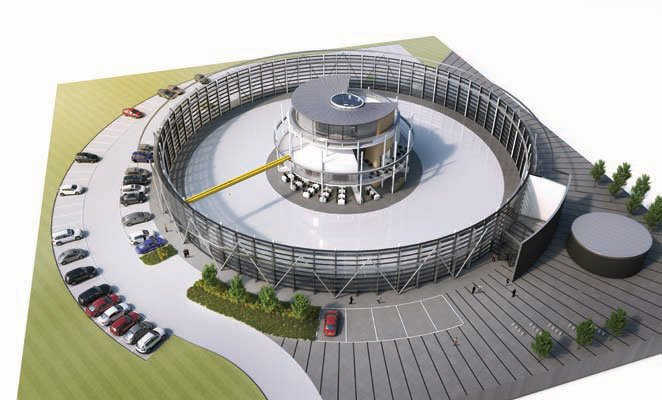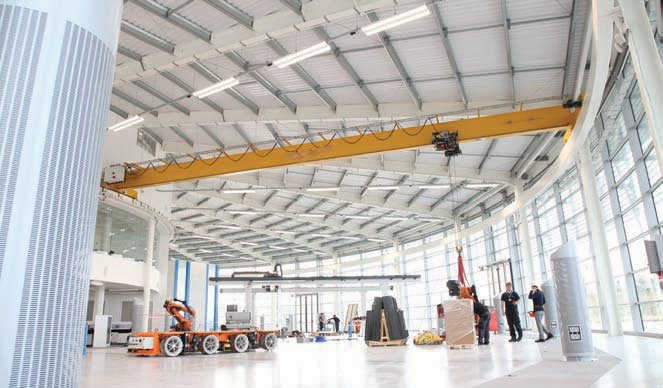Designing and building overhead cranes for advanced manufacturing plants is no different than in traditional industries. If you want to understand the design of overhead cranes, this article may help you. This article will analyze a bridge crane design case that took place in the UK. This crane company designed three bridge cranes for an advanced manufacturing factory to handle heavy machinery and parts (including robots, wind turbines and aircraft wings). . What makes it special is that they customized a circular overhead crane for the factory, which is capable of driving around the unique building and lifting products weighing up to 5 tons.
The facility is billed as the UK’s first reconfigurable assembly and parts manufacturing facility for collaborative research. It is a revolutionary glass-walled “reconfigurable factory” at the heart of the University of Sheffield’s new advanced manufacturing campus at Sheffield Business Park.

Its purpose is to ensure that the UK’s advanced manufacturing supply chains have access to the expertise they need to make the most of new challenges and opportunities, and that the UK remains an international leader in high-value manufacturing.
The crane company designs, supplies and installs cranes that will play a vital role in the handling of heavy machinery and parts including robots, wind turbines and aircraft wings. In addition to two 10-tonne cranes that can operate in tandem, the contract also includes a bespoke circular overhead crane capable of traveling around the unique building and lifting products weighing up to 5 tonnes.
The factory needed a lighter crane for the circular building, and given its iconic shape, they turned to the crane company to design a product that would fit their exact specifications. Using larger cranes in tandem helps improve safety. For example, aircraft wings can be flexible, so lifting them with two cranes ensures greater stability.
This circular single girder crane is unlike any other crane we have built before as it is equipped with a special end carriage that allows it to travel around the track of a circular building. All cranes are equipped with an electric hoist which will maximize Maximize reliability, production and performance, and minimize maintenance requirements.
Bridge cranes have a huge impact on productivity, so the product and the team behind it must be of the highest standard.

Strictly speaking, every project we have done has its own differences, and the working environment and site parameters are almost never the same. In this case, although there are some systematic differences between advanced manufacturing and traditional manufacturing, they still have many things in common. From this we see the flexibility of crane design, and this flexibility allows it to be fully applied in almost all industries. Crane companies that can master this flexibility will definitely gain more trust from customers.
We can summarize the following points about the flexibility of crane design:
Contact our crane specialists
Send us a message and we will get back to you as soon as possible.